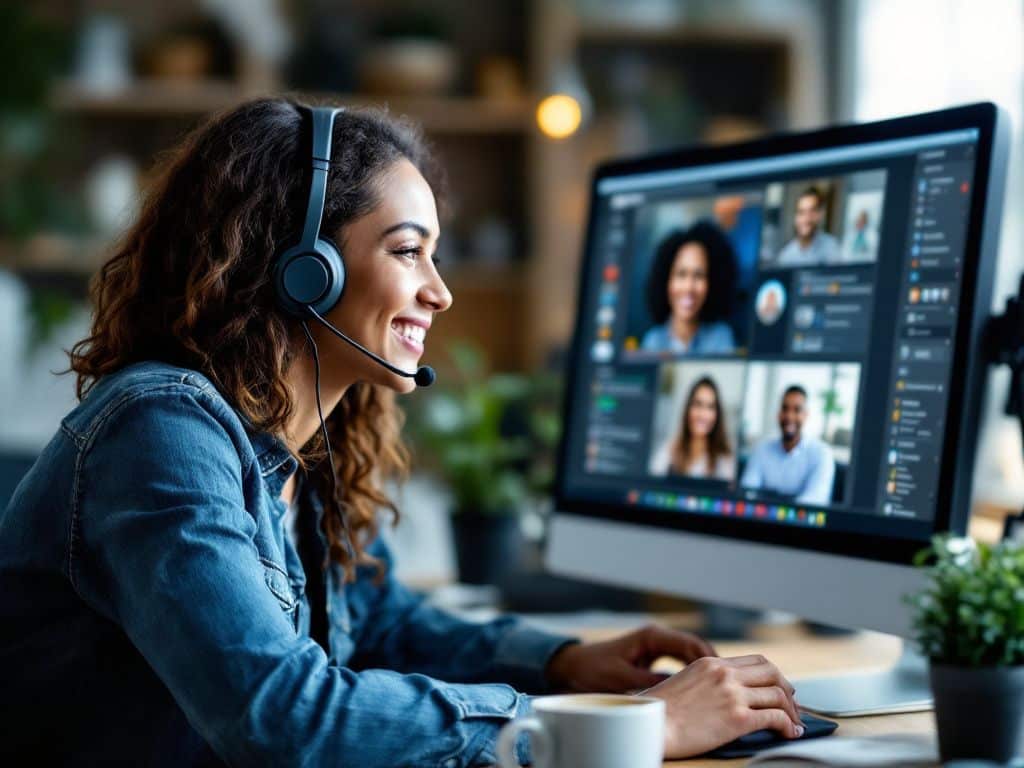Ever found yourself tangled in pixels during an online client session, wondering if your message is resonating as it should? Trust me, you’re not alone. Navigating the world of virtual client interactions can be a bit of a maze at times. But with some thoughtful event preparation, your digital meetings can achieve new levels of success. So, let’s dive into how you can make these sessions not just work—but work brilliantly.
The Challenge of the Digital Divide
The issue with virtual meetings isn’t just the technology; it’s the human connection—or lack thereof. Those tiny tech glitches and muffled audio moments can leave you questioning whether your client even caught the key points of your presentation. As we all know, first impressions matter, and when you’re meeting clients online, you only have a digital handshake to rely on. That’s where event preparation becomes your secret weapon. It’s like getting client ready, but in pixels instead of a fancy boardroom.
Setting the Stage: Pre-Session Preparations
1. Tech Check: Your Pre-Game Ritual
Start with the basics: check your equipment. A broken connection or unflattering webcam angle can derail the whole experience. Give this a try: before each meeting, run a quick self-audit—test your microphone, camera, and internet speed. It might sound simple, but those five minutes of pre-session setup can prevent an hour of frustration.
2. Crafting Your Digital Environment
Digital meetings don’t just exist in a void—they’re set in a backdrop that helps tell your story. Ensure your online background is professional and free from distractions. Think of it as your digital outfit, something that conveys professionalism and polishes your image to match what you bring to the table.

3. Mastering the Tools of Trade
Familiarize yourself with the software you’re using. Whether it’s Zoom, Skype, or Microsoft Teams, breathe life into your online sessions with the savvy use of screen sharing, digital whiteboards, and other features. Trust me, nothing stalls momentum more than those awkward “Um, how do I share my screen?” moments.
Structure for Success: Running the Meeting
1. First Impressions: Starts with Hello
Begin with a warm welcome. Like a host at a dinner party, your role is to make sure everyone feels at ease. Engage clients with a straightforward hello and a bit of small chat. Remember, building rapport sets the stage for open communication throughout the session.
2. Clear Roadmaps: Set the Agenda Throne
Lay out the meeting’s game plan upfront. Share your screen, if necessary, to ensure your clients understand what’s in store. Providing a clear agenda establishes expectations, which can make your time together far more effective. It’s like pre-laying tiles for a smooth road ahead.
3. Engage Hands: Interactive Elements
Incorporate interactive elements to keep everyone engaged. Use questions and prompts to invite input. Simple things like polling features or break-out rooms can shift participants from passive listeners to active contributors. It’ll help make the session feel more like a collaborative dialogue rather than a lecture.

The Communication Dive: Simplicity Wins
1. Choose Clarity over Complexity
Keep your language straightforward. Don’t overcomplicate your message or drown it in jargon. When you stick to clarity, your ideas reach clients more efficiently, aiding in understanding and decision-making.
2. Visual Aids: The Unspoken Ally
Got visual aids? Use them wisely. Visuals can illuminate points that words can muddy. Think infographics, slides, or videos—these tools supplement your verbal messages with an image that sticks. They reinforce concepts and sustain interest, essentially acting as ambassadors for your ideas.
Wrapping It Up Perfectly
1. Re-Confirm Commitments
The end of the session is as crucial as the start. Recap key points and confirm action items with your client. Reiterate commitments, deadlines, and next steps. It’s this summation that keeps everyone on the same page and sets up expectations moving forward.

2. Gathering Feedback
Don’t skip the feedback—ask for it directly. Listen with openness, considering what went well and what could improve. Invite them to share their thoughts, offering insight into how you can better serve them next time. This act of asking might seem small, but it holds infinite value for growth.
Infusing Humanity into the Digital
More than technology and processes, successful online client sessions are about connecting on a human level. So, sprinkle these encounters with moments of genuine engagement and warmth. Think about how you would converse in person, and let that guide your digital interactions.
Event Preparation as a Lifeline
In every step we’ve discussed, remember that the heart of this system is event preparation. It doesn’t just save time; it crafts experiences. Upon returning to the essence of these sessions, it becomes clear: preparation not only reduces hiccups but enhances the client experience. The goal is to leave no room for doubt about your professionalism and dedication.
Building Blocks of Virtual Client Success
Like most worthwhile endeavors, mastering online sessions doesn’t happen overnight. It’s a puzzle we assemble over time—each piece is formed by effective preparation, engaging strategies, and human connection. Start with improving one meeting at a time, and the accumulated wins will drive tremendous progress.
In our digital age, effective online client interactions are becoming an indispensable skill. So, whenever you’re about to start your next session, lean into these principles. They’ve been proven to transform confusion into clarity, inefficiency into impact just by turning preparation into your best ally. Ready for your next session? Let’s make it a great one!
Frequently Asked Questions
What are the key steps in event preparation?
Event preparation involves several key steps, including defining the event’s concept and objectives, identifying the target audience and expected number of attendees, selecting a venue, and planning the logistics such as catering, audio-video needs, and security. It also includes promoting the event, coordinating with vendors, and ensuring compliance with health and safety standards[3][5].
How do I choose the right venue for my event?
Choosing the right venue involves considering the number of expected attendees, the type of event, and the need for spaces where conversations can happen. It is also important to ensure the venue has adequate facilities and to plan for the setup and cleanup procedures. Additionally, you should review the venue’s policies and guidelines, such as those related to event registration and safety protocols[1][3].
What is the importance of creating an event FAQ?
Creating an event FAQ is crucial as it helps attendees find solutions to common problems quickly and conveniently. It also reduces the time and effort required by the event team to handle repetitive questions. The FAQ should cover aspects such as registration, ticket sales, check-in, and other logistical information[5].
How should I promote my event to maximize attendance?
Promoting an event effectively involves setting up a registration form and landing page, sending targeted email campaigns, and using various marketing channels such as social media, paid advertising, and partner promotions. It is also important to send reminder emails to registered attendees and to use engaging content like polls and Q&A sessions to increase interest and participation[2][3].
References










